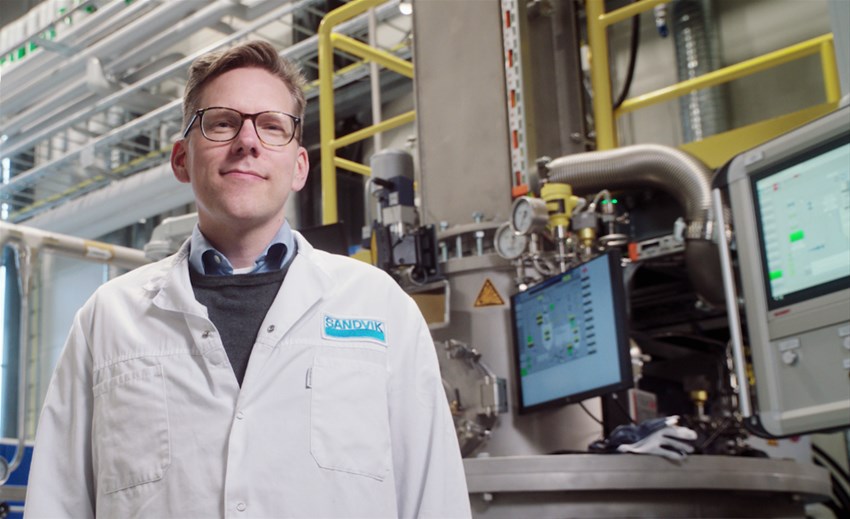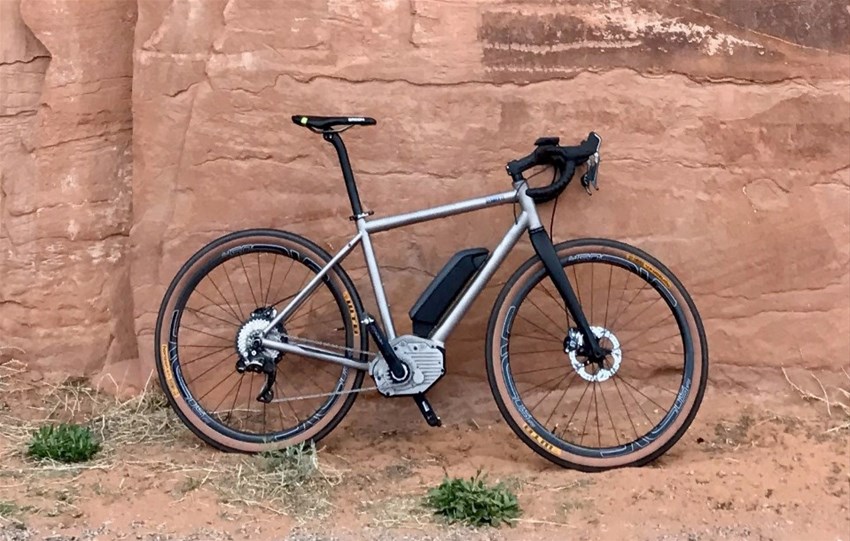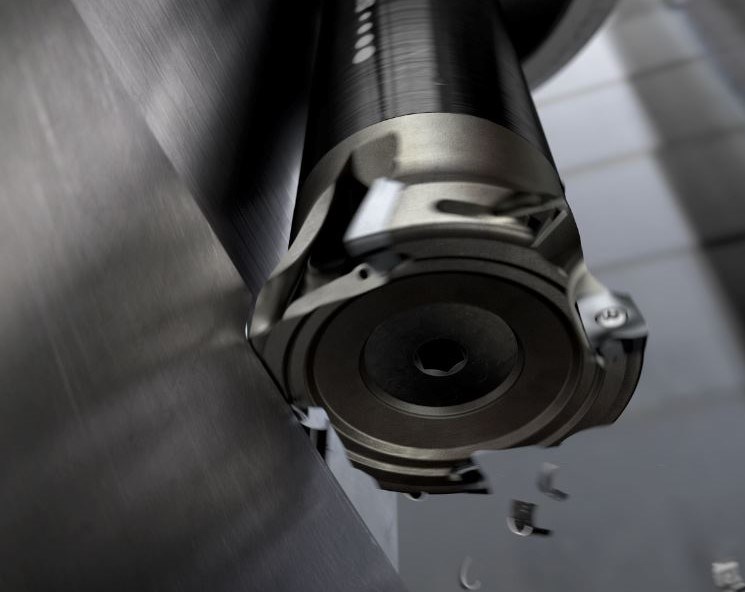“Research collaboration is an important part of our work with industrialising additive manufacturing”
07 Jan 2021
Sandvik is a high-tech, global industrial group with unique expertise in materials technology. For a few years now, the company has been investing heavily in additive manufacturing and metal powder. They also conduct research in this fast-developing field together with several universities around the world, including University West. “Research collaboration is an important part of our work with industrialising additive manufacturing. In addition to new critical knowledge, we are learning even more about the needs of end-users,” says Peter Harlin at Sandvik Additive Manufacturing.

“Our new state-of-the-art facility for titanium powder creates completely new opportunities for additive manufacturing with titanium,” says Peter Harlin, sales and research management at Sandvik Additive Manufacturing. PHOTO: Sandvik AB.
Metal manufacturing and material research are recurring themes throughout the long history of Sandvik Group. When the company was founded in 1862, Sweden’s major train and railway expansion called for a significantly improved steel kind of metal. It needed to be a cleaner, and able to extend the life of the products available at that time. This legacy led to Sandvik beginning to work with powder metallurgy in 1974.
Techniques for manufacturing products based on powder metallurgy have been developed over the years for a variety of uses. Today, the interest in manufacturing with metal powder is perhaps greater than ever, with a current focus on additive manufacturing (also known as 3D printing).
“The industry foresees great opportunities”
“Additive manufacturing has great potential and is expected to expand rapidly in the coming years. The industry foresees great opportunities for a manufacturing industry that is more efficient, flexible, and sustainable in an array of product areas,” according to Peter Harlin, who works with sales and research management at Sandvik Additive Manufacturing. “The manufacturing technology is well suited for the production of very complex and light constructions, short production series, quick repairs, and much more.”
Additive Manufacturing with metal powder brings unprecedented freedom of design, both in terms of materials and the realization of complex geometries that were previously impossible to attain using conventional manufacturing technologies. Adding to that, the technology generates very little to no material waste. The product is printed layer by layer with the metal powder and does not require much finishing. The powder that remains after the components have been printed can be reused for another print, which results in a highly sustainable production process. The many advantages of this manufacturing technology means that the industry is actively looking for new applications, using more types of alloys.

With lightweight titanium components, e-bikes become lighter, more energy efficient, and more durable. Sandvik prints components for the bicycle manufacturer GSD Global. PHOTO: GSD Global.
Focus on niche products
“Sandvik already has one of the widest alloy programmes optimized for additive manufacturing on the market, and we see even greater potential for our unique product range in the future. As a result, we are purposefully investing in continuously developing more materials that meet the industry’s new needs for improved productivity, profitability, and sustainability. We focus mainly on niche products for demanding customers within aerospace, medicine, energy, tool manufacturing, and other industries.”
Sandvik is a leading manufacturer of advanced stainless steels and special alloys in various shapes. The company is a global player with 40,000 employees. In Sandviken, the company has a newly built, state-of-the-art facility where titanium powder for additive manufacturing is manufactured in a completely protected atmosphere to ensure as pure a powder as possible. Customers can order and receive premium Osprey® titanium powder that is perfectly tailored to fit their specific application and needs – down to the size and characteristics of every last grain. Titanium powder can be delivered in sizes down to one thousandth of a millimeter.
Large market for titanium powder
“The market for titanium powder for additive manufacturing is large because it is a cost-effective way of manufacturing products from this exclusive metal,” says Peter.
“At Sandvik we have, for example, developed a new milling tool in titanium that is 80% lighter compared to the original tool – and up to 200% more productive for the end-customer. We also print lightweight components for e-bikes in titanium, which makes the bikes lighter, stronger, and more durable – and thereby more energy efficient. These are two great examples of how additive manufacturing can add customer value and some true sustainability benefits.”
“Extensive research will be required to produce more materials that are optimized for additive manufacturing. Our R&D units around the world participate in relevant research initiatives by several higher education institutions. This includes two exciting projects run by University West.”

At Sandvik, for example, they have 3D printed a new milling machine in titanium, Lightweight CoroMill® 390, that is 80 per cent lighter compared to the original milling machine and up to 200 per cent more productive for the end-customer. PHOTO: Sandvik Coromant AB
Participating in two University West research projects
Sandvik is one of several industry partners in the University’s two profile research projects on metal-based additive manufacturing with powder bed fusion systems: SUMAN-Next and PODFAM. Both initiatives focus on high-temperature materials and cover the entire production chain, from powder production, 3D printing, and post-processing to end-users.
“In these projects, we primarily contribute with our expertise as a powder manufacturer and materials expert. At the same time, we are learning about process parameters and many other aspects of additive manufacturing. Working with other industrial partners provides us with a valuable network. We’re also granted an even more detailed understanding of the end-user needs, which allows us to keep pushing the boundaries to develop even better materials and products.”
"SUMAN-Next is a significant contribution"
“SUMAN-Next is a significant contribution to this research field. It ended this summer, and we are also participating in the 8-year PODFAM research initiative, which will pick up where SUMAN-Next leaves off. With PODFAM, we can go even further and approach the implementation stage.”
Peter notes the strong international character of University West’s research environment in Trollhättan.
“The University has managed to build good research teams with committed members from around the world. The conditions for research are also well formulated. University West, for example, has been successful in leveraging knowledge from its previous research in these two projects. This provides synergies that quickly push the knowledge front forward.”
Societal benefits highlighted
Another advantage Peter sees with research collaboration is the way it highlights the societal benefits that come from these initiatives.
“As an industrial partner, we get the opportunity to show off what we do and this, in turn, can open up opportunities for additive manufacturing in more areas. We offer, for example, metal powder for areas as ranging from manufacturing medical implants and demanding applications within the aerospace industry, to lightweight components for very artisan e-bikes. So far, I think that we have only seen a fraction of the smart, sustainable products and technical solutions that additive manufacturing can contribute to.”
For more information: www.additive.sandvik www.metalpowder.sandvik


